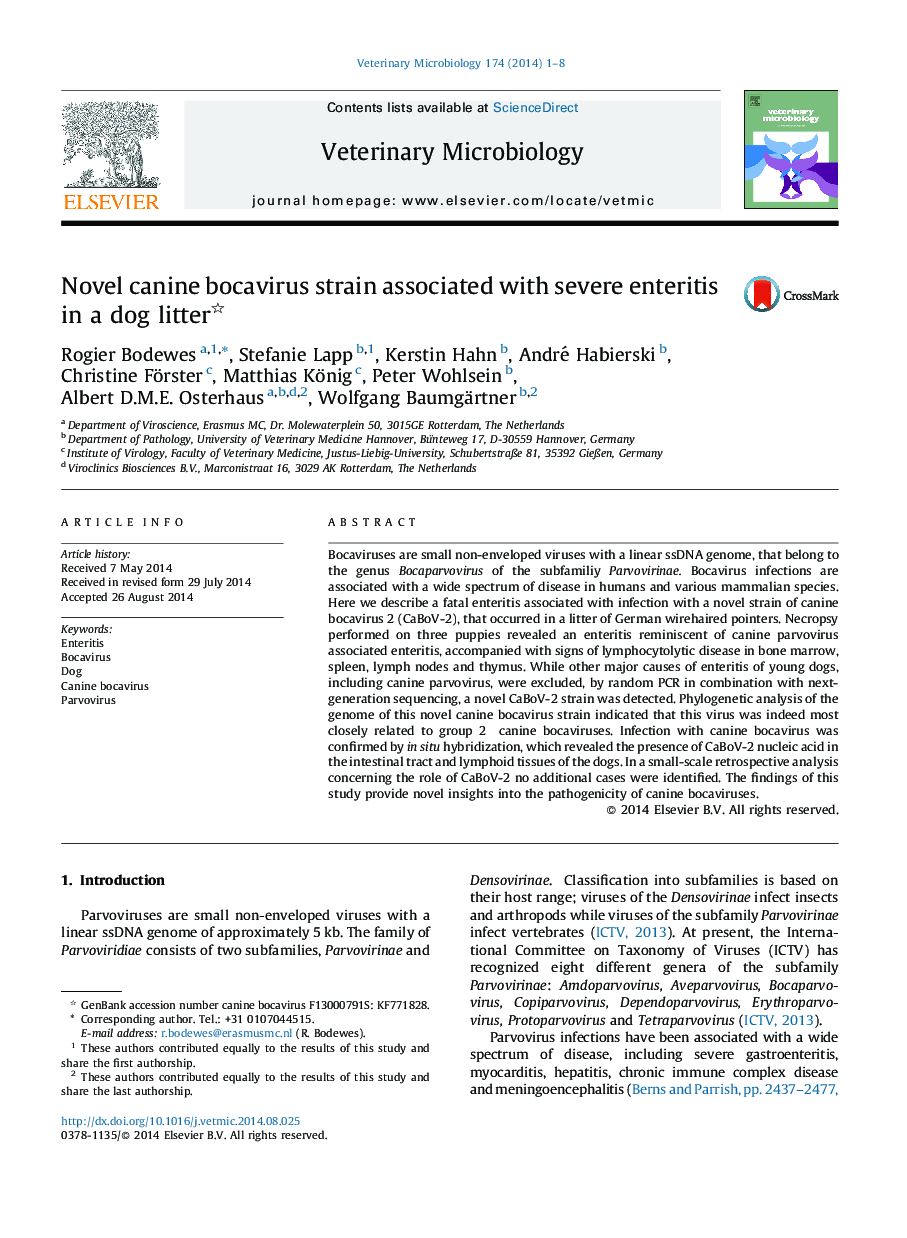| Article ID | Journal | Published Year | Pages | File Type |
|---|---|---|---|---|
| 5800512 | Veterinary Microbiology | 2014 | 8 Pages |
â¢An outbreak of fatal enteritis occurred in a dog litter.â¢Major known causes of enteritis of young dogs were excluded.â¢A novel canine bocavirus 2 strain was detected by random PCR and NGS.â¢CaBoV-2 was detected in the intestinal tract and lymphoid tissue by ISH.â¢No additional cases were identified by a small retrospective analysis.
Bocaviruses are small non-enveloped viruses with a linear ssDNA genome, that belong to the genus Bocaparvovirus of the subfamiliy Parvovirinae. Bocavirus infections are associated with a wide spectrum of disease in humans and various mammalian species. Here we describe a fatal enteritis associated with infection with a novel strain of canine bocavirus 2 (CaBoV-2), that occurred in a litter of German wirehaired pointers. Necropsy performed on three puppies revealed an enteritis reminiscent of canine parvovirus associated enteritis, accompanied with signs of lymphocytolytic disease in bone marrow, spleen, lymph nodes and thymus. While other major causes of enteritis of young dogs, including canine parvovirus, were excluded, by random PCR in combination with next-generation sequencing, a novel CaBoV-2 strain was detected. Phylogenetic analysis of the genome of this novel canine bocavirus strain indicated that this virus was indeed most closely related to group 2 canine bocaviruses. Infection with canine bocavirus was confirmed by in situ hybridization, which revealed the presence of CaBoV-2 nucleic acid in the intestinal tract and lymphoid tissues of the dogs. In a small-scale retrospective analysis concerning the role of CaBoV-2 no additional cases were identified. The findings of this study provide novel insights into the pathogenicity of canine bocaviruses.
